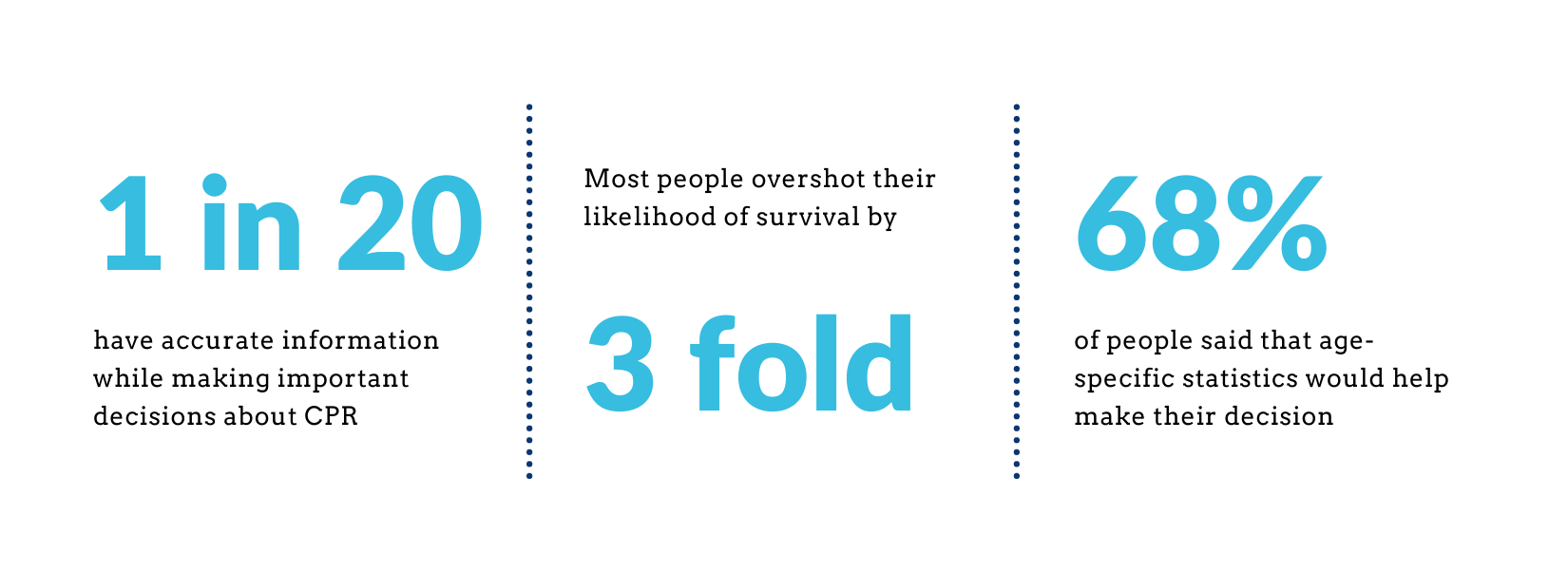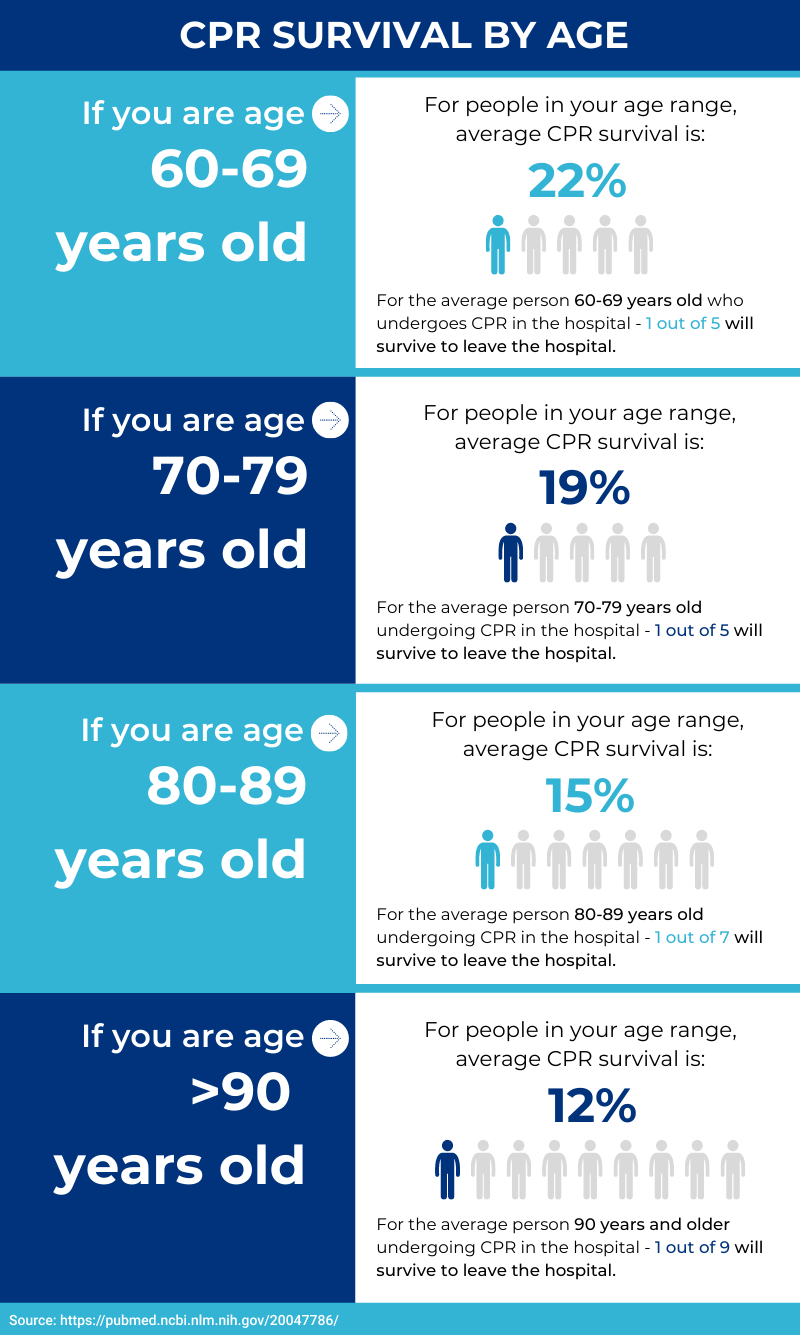CPR Personalization.
In today’s world, personalization follows us everywhere, from the ads we see on Google to the posts we see on Instagram. But this begs the question — if our Facebook advertisements are tailored to our age and environment, then why is our healthcare – something far more important and life altering – still following the same cookie cutter model?
In our traditional, one-size-fits-all healthcare model, we tend to ask patients to make difficult and important healthcare decisions without providing information on how this may impact them personally. When patients have an accurate understanding of how medical care treatments may impact them based on their own age, environment, and diagnoses, they are able to make better decisions about their medical care and maintain a higher quality of life.
A perfect example of this is seen with CPR. When CPR is pictured in TV shows and movies, it is always pictured as a miraculous, life-saving action. But the reality of CPR is far different and often misunderstood.
To test exactly how much older adults knew about CPR, Koda recently surveyed 106 individuals over the age of 60 from across the country.
Seniors started off by watching a 1 minute video on CPR and answered two questions 1) whether they’d want CPR in their current state of health if their heart stopped and 2) whether they’d want CPR if they had a terminal condition and unacceptable quality of life. They were then asked what they thought 1) their likelihood of survival to discharge and 2) their likelihood of survival to discharge with a similar quality of life was after receiving CPR at the hospital.
The survey respondents were then shown data about the survival rates of CPR for their age group referenced from Larkin et. al, and asked for their opinions on the data.
This is the truth that they weren’t prepared for…
For older people, or those with other medical conditions (cancer, stroke, obesity, etc.), CPR rarely works. Studies show 15.9% of all adults survive in-hospital CPR, with a further steady decline in the likelihood of survival for older adults as they age. Patients often experience broken rib bones and brain damage due to vigorous chest compressions and lack of blood flow to the brain. Those who survive will usually be unresponsive (in a coma) and on a breathing machine for several days.
Most of the survey respondents did not know this truth.
95% of survey respondents overestimated their chance of survival with CPR, on average overshooting their likelihood of survival three-fold (21% vs 63%). This means that only 1 out of 20 people have accurate data while making these decisions.
Learning about CPR’s true survival rates was disturbing to many study participants. If ignorance is bliss, then information is terrifying. But it’s also incredibly powerful! Many participants said that the survival rates were much lower than expected. Some felt “depressed”, “horrible”, “sad”, and at a “loss for words.” Despite the shock, the survey respondents wanted to have all the facts before making such a critical health care decision.
68% of people said that having the data would have been helpful in making a decision while 27% said that it would have immediately changed their decision.

These results show us that patients don’t understand how their age and health status affects their chances of CPR survival… but they want to.
And this doesn’t hold for just CPR, but a variety of other difficult decisions we ask patients to make. Health care decisions are already difficult and complicated, the least we can do is make sure patients and their families have realistic and accurate information to lean on. As we increasingly move into a digital age, it’s important for the technology we develop to provide a personalized, tailored experience to our patients so they can make informed choices about their care.
It’s time personalized care became the standard of care.

